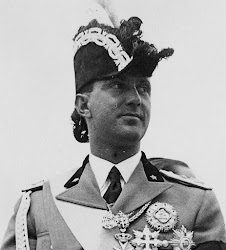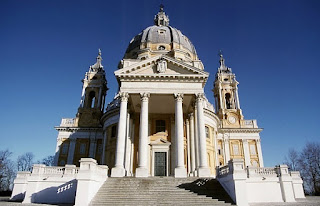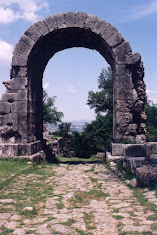NEW - Vittorio Emanuele - Prince of Naples
Heir to the last King of Italy spent his life in exile
Prince Vittorio Emanuele of Savoy, the only son of Umberto II, the last King of Italy, was born on this day in 1937 in Naples. He had to leave Italy when he was nine years old following the constitutional referendum held in Italy after World War II. The referendum affirmed the abolition of the monarchy and the creation of the Italian republic in 1946. Umberto II had been King of Italy for just over a month and was afterwards nicknamed the May King. He had been de facto head of state since 1944, after his father, King Victor Emmanuel III, had transferred most of his powers to him. Umberto lived for 37 years in exile in Cascais on the Portuguese Riviera. He never set foot in his native Italy again as he, and all his male heirs, were banned from Italian soil. His only son, Vittorio Emanuele, spent most of his life exiled from Italy and living in Switzerland. He married a Swiss heiress and world ranked water skier, Marina Doria, in 1971. They had one son, Prince Emanuele Filiberto of Savoy, Prince of Venice, who was born in 1972. Vittorio Emanuele also used the title Duke of Savoy and claimed to be head of the House of Savoy, although this claim was disputed by supporters of his third cousin, Prince Amedeo, Duke of Aosta, and his son, Almone. Read more…
_________________________________________
Battle scenes brought fame and riches to Baroque artist
Michelangelo Cerquozzi, the Baroque painter, was born on this day in 1602 in Rome. He was to become famous for his paintings of battles, earning himself the nickname of Michelangelo delle Battaglie - Michelangelo of the Battles. Cerquozzi was born into a well-off family as his father was a successful leather merchant. He started his artistic training at the age of 12 in the studio of Giuseppe Cesari, a history painter, with whom the young Caravaggio trained when he first arrived in Rome. Not much is known about Cerquozzi’s early work, although he is thought to have been influenced by the Flemish and Dutch artists active in Rome at the time. As well as battles, Cerquozzi painted small, religious and mythological works and some still life scenes. Cerquozzi joined the Accademia di San Luca in 1634 and, although he did not follow their strict rules, he started gradually gaining recognition for his work. He secured commissions from prominent Roman patrons, including representatives of the Barberini and Colonna families. His only public commission in Rome was for a lunette depicting the Miracle of Saint Francis of Paolo in the cloister of the Church of Sant’Andrea delle Fratte, which has sadly been lost. Read more…
________________________________________
Franco Zeffirelli – film director
Shakespeare adaptations made director a household name
The film, opera and television director Franco Zeffirelli was born on this day in Florence in 1923. He was best known for his adaptations of Shakespeare plays for the big screen, notably The Taming of the Shrew (1967), with Richard Burton and Elizabeth Taylor, Romeo and Juliet (1968) and Hamlet (1990) with Mel Gibson. Boldly, he cast two teenagers in the title roles of Romeo and Juliet and filmed the tragedy against the backdrop of 15th century buildings in Serravalle in the Veneto region. His film became the standard adaptation of the play and has been shown to thousands of students over the years. His later films included Jane Eyre (1996) and Tea with Mussolini (1999), while he directed several adaptations of operas for the cinema, including I Pagliacci (1981), Cavalleria rusticana (1982), Otello (1986), and La bohème (2008). Because he was the product of an affair between two people already married, Zeffirelli's name was an invention, and a misspelled one. His mother intended him to be registered as Zeffiretti - the Italian for 'little breezes' - in a reference to a line in Mozart's opera, Idomeneo. However, it was misspelled in the register. Read more…
_______________________________________
Lazzaro Spallanzani – priest and scientist
18th century biologist who pioneered artificial insemination
Lazzaro Spallanzani, the first scientist to interpret the process of digestion and the first to carry out a successful artificial insemination, died on this day in 1799 in Pavia. Spallanzani made important contributions to the experimental study of bodily functions and animal reproduction. His investigations into the development of microscopic life in nutrient culture solutions paved the way for the later research of Louis Pasteur. Born in Scandiano in the province of Reggio Emilia, the son of a wealthy lawyer, Spallanzani attended a Jesuit college and was ordained as a priest but then went to Bologna to study law. Influenced by the eminent Laura Bassi, a professor of physics at the University, Spallanzani became interested in science. In 1754 Spallanzani was appointed professor of logic, metaphysics and Greek at a college in Reggio and he later became a professor of physics at the University of Modena. Spallanzani experimented in transplantation, successfully transplanting the head of one snail on to the body of another. After a series of experiments on digestion, he obtained evidence that digestive juices contain special chemicals that are suited to particular foods. Read more…
_______________________________________
Claudia Mori - actress and singer
Film star who married pop icon Adriano Celentano
The actress, singer and later television producer Claudia Mori, married for more than half a century to Italy’s all-time biggest-selling recording artist, Adriano Celentano, was born on this day in 1944 in Rome. She and Celentano met in 1963 on the set of Uno strano tipo (A Strange Type), a comedy film in which they were both starring. The two were married the following year at the Church of San Francesco in Grosseto in Tuscany, having kept their intentions secret to avoid publicity. Mori was only 20 when she and Celentano - six years her senior - were married but she had already made several films. Born Claudia Moroni, she made her film debut in Raffaello Matarazzo’s romantic comedy Cerasella at the age of just 15 in 1959, featuring as the title character opposite Mario Girotti, the actor who would later change his name to Terence Hill and become famous as the parish priest Don Matteo in the long-running television series of the same name. The following year she had a supporting part as a laundry worker colleague of Alain Delon in Luchino Visconti’s Rocco e i suoi fratelli (Rocco and His Brothers). Read more…
_______________________________________
Book of the Day: The Force of Destiny: A History of Italy Since 1796, by Christopher Duggan
The greatness of Italy's culture and way of life have had a powerful attraction for many generations of visitors. This has created an overwhelming sense that Italy is a fundamentally benign and easy going country. The Force of Destiny lays waste to this idea. While sharing everyone's enthusiasm for Italy as a place, the author strongly distinguishes this from its political role over the past two centuries, which has been both vicious and ruinous for Europe as a whole. Christopher Duggan skillfully interweaves Italy's art, music, literature, and architecture with its economic and social realities and political development to tell this extraordinary European story. The first English-language book to cover the full scope of modern Italy, from its origins more than two hundred years ago to the present, The Force of Destiny is a brilliant and comprehensive study - and a frightening example of how easily nation-building and nationalism can slip toward authoritarianism and war.Christopher Duggan, who died in 2015, was a British historian and academic. He specialised in the political, social and cultural history of modern Italy. He began his career as a research fellow at Wolfson College, Oxford and then at All Souls College, Oxford. In 1987, he moved to the University of Reading, where he was Professor of Modern Italian History from 2002.
Booking.com


.png)
.jpg)


_(cropped).jpg)








.jpg)





